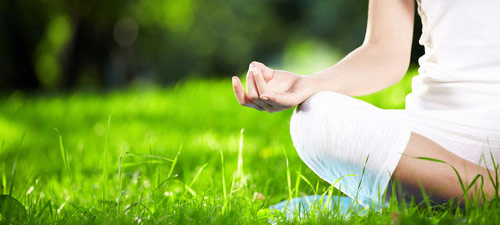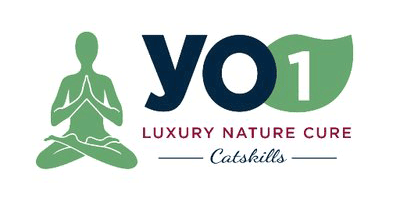Relaxation & Meditation
Increased muscle tension and intrusive thoughts can interfere with sleep. Therefore, it is not surprising that techniques aimed at relaxing muscles (progressive muscle relaxation and biofeedback) and quieting the mind (meditation) have been found to be effective treatments for insomnia. Most people can learn these techniques, but it usually takes several weeks before they can sufficiently master the techniques well enough to help ease insomnia. There is a growing body of evidence that supports the value of meditation in treating insomnia. Several studies show that regular meditation practice, either alone or as a part of Yoga practice, results in higher blood levels of melatonin, an important regulator of sleep.
To sleep a person needs to be relaxed. Anytime we are upset or angry respiration goes up, our stomach produces more acid and the mind races, potentially leading to insomnia plus other disorders.

Relaxation Technique: Progressive muscle relaxation
Procedure
You can use a prerecorded audiotape to help you go through all the muscle groups, or you can just learn the order of muscle groups and work through them from memory.
- Choose a place where you can lie down on your back and stretch out comfortably, such as a carpeted floor.
- Inhale and tense each muscle group (hard but not to the point of cramping) for 4 to 10 seconds, then exhale and suddenly and completely relax the muscle group (do not relax it gradually). Give yourself 10 to 20 seconds to relax.
- When you are finished, return to alertness by counting backwards from 5 to 1.
Muscle groups and how to tense them
- Hands: Clench them.
- Wrists and forearms: Extend them and bend your hands back at the wrist.
- Biceps and upper arms: Clench your hands into fists, bend your arms at the elbows, and flex your biceps.
- Shoulders: Shrug them.
- Forehead: Wrinkle it into a deep frown.
- Around the eyes and bridge of the nose: Close your eyes as tightly as possible. (Remove contact lenses before beginning the exercise.)
- Cheeks and jaws: Smile as widely as you can.
- Around the mouth: Press your lips together tightly. (Check your facial area for tension.)
- Back of the neck: Press your head back hard.
- Front of the neck: Touch your chin to your chest. (Check your neck and head for tension.)
- Chest: Take a deep breath and hold it, then exhale.
- Back: Arch your back up and away from the floor.
- Stomach: Suck it into a tight knot. (Check your chest and stomach for tension.)
- Hips and buttocks: Press the buttocks together tightly.
- Thighs: Clench them hard.
- Lower legs: Point your toes toward your face, as if trying to bring the toes up to touch your head. Then point your toes away and curl them downward at the same time. (Check the area from your waist down for tension.)
Progressive muscle relaxation is sometimes combined with meditation.
Relaxation Technique: Meditation
10-15 minutes at a time, 2 to 3 times a day. As you become familiar with this practice, you may make adjustments anytime of the day.
Guidelines to follow:
- To clear your mind, stop planning, no criticism, no judgment, no thinking!
- Detach yourself from everything and anything you see or hear. Use a sound effects to help you to focus
- Become familiar with breathing 10-12 breaths per minute.
- While breathing in count 1-2-3 (not seconds) and while breathing out count 1-2-3-4-5. As you develop a rhythm that is comfortable, substitute numbers or mantra or pray while breathing.
- Your thoughts may come and go into your head but you don’t follow them. If unable to block those thoughts then start-repeating steps as above and keep touching the tongue to the palate.
- In the beginning it can be difficult but later on with practice and effort it will be a lot easier and automatic process like driving and typing.
- Every Half an hour takes three deep breaths. Air is one of the best natural vitamins we can take.
- Regular Exercises 20-30 minutes a day, cardio vascular and strength training.
- If you are using a CPAP or BIPAP. While breathing in practice same steps until you are relaxed and sleepy.
Breathing Exercise Therapy
Principle: While doing yoga or other exercise, the body muscles are initially relaxed and the heart rate and respiration slow down. A person can control their respiration and the opposite will occur, the body and muscles will relax.
Methodology: The breathing exercise can be performed while lying down or sitting up. Before sleep if there is a lot of mind racing present then the body will not be relaxed. Start the breathing exercise as follows:
- While looking at a clock practice slow breathing which includes breathing in and out easily. Try not to take deep breaths.
- Slow your breathing down to assure you are breathing approximately 10 breaths per minute. Continue this for up to 15 minutes or until you feel relaxed.
The breathing exercise helps by diverting the minds attention in feeling the breathing in and out, counting the breaths, and looking at the clock. This can also be done during the day, 2-3 times a day while sitting up. By doing this you pay attention to breathing in and out, counting, looking at the clock, and watching for back posture, which should be 90 degrees.
This breathing exercise can be done at anytime when you are awake: while driving, walking, sitting up, etc. Feel yourself breathing in and out.
Asthma/COPD patients can also use this exercise by purse lip breathing along with the above.







